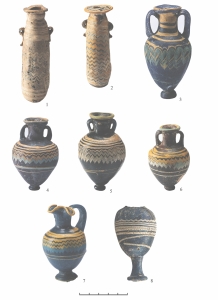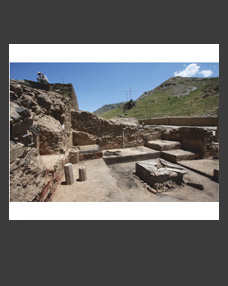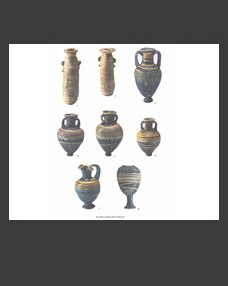 Olga S. Rumyantseva1,* and Georgy A. Lomtadze1,2,*
Olga S. Rumyantseva1,* and Georgy A. Lomtadze1,2,*
1Institute of Archaeology of the Russian Academy of Sciences, Moscow, Russia
2State Historical Museum, Moscow, Russia
*E-mail: o.roumiantseva@mail.ru
**E-mail: gylomtadze@mail.ru
Keywords: core-formed vessels, archaic, Hellenism, Mediterranean groups I-III, Northern Pontic, Taman Peninsula, necropolis, chronology
The article publishes core-formed glass vessels formed on a sand-clay core from the 1911 excavations under V.V. Skorpil, which are stored in the State Historical Museum. Of the nine finds, eight belong to the Archaic period, to the Mediterranean group I. The earliest of them are dated to the late 6th – early 5th century BC, the latest belong to the horizon of the middle/second half of the 5th century BC. One vessel belongs to the Hellenistic period, presumably to the mid-3rd – mid-2nd century BC. The paper also publishes data on the burials, where the glass vessels come from, as well as on the ceramic vessels from these burials stored in the State Historical Museum collection. The dating of the vessels based on their typological features (after M. McClellan), both from the Tuzla necropolis and their parallels from other dated complexes of the Northern Pontic, are in good agreement with the dates of the burials containing them obtained on the basis of other categories of goods, primarily black-glazed vessels. The predominance in the necropolis collection of type II.C.VII amphoriskoi (according to M. McClellan), which were most widespread in the second-third quarters of the 5th century BC, reflects the general trend in the dynamics of the spread of core-formed vessels both in the Pontic region and beyond, as well as the extreme popularity of this type of vessels.
DOI: 10.31857/S0869606325010103, EDN: BGLPCN







